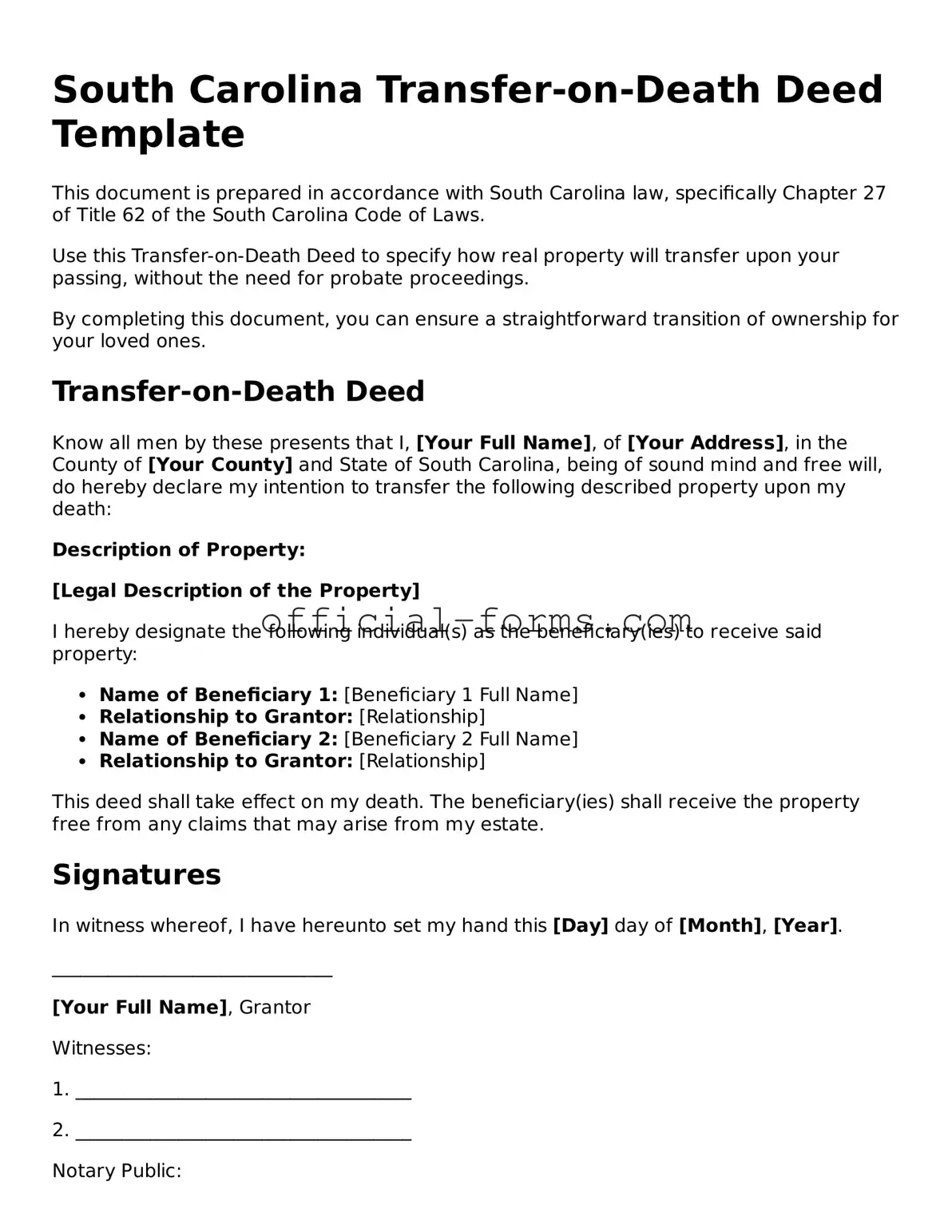Official South Carolina Transfer-on-Death Deed Document
The Transfer-on-Death Deed form in South Carolina allows property owners to designate beneficiaries who will receive their real estate upon their passing, without the need for probate. This straightforward tool simplifies the transfer process and provides peace of mind for both the property owner and their loved ones. Understanding how to properly utilize this form can ensure that your wishes are honored and your property is transferred smoothly.
Open My Transfer-on-Death Deed Now
